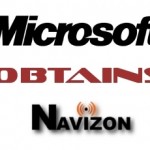 San Francisco — Just a little over a month ago, Google unveiled click-to-call phone options in local ads on smartphones. Now, in an attempt to further its mobile-ad facilities, Google is now improving on its mobile ad arsenal by expanding its new click-to-call ad options to national advertisers, making it easier for large companies to take advantage of the offering.
San Francisco — Just a little over a month ago, Google unveiled click-to-call phone options in local ads on smartphones. Now, in an attempt to further its mobile-ad facilities, Google is now improving on its mobile ad arsenal by expanding its new click-to-call ad options to national advertisers, making it easier for large companies to take advantage of the offering.
Previously, advertisers could include a click-to-call link that would get you a local number. Now, a post on the Inside AdWords blog explained today, “We are bringing the same click-to-call capabilities to national advertisers through phone extensions. Phone extensions allow you to add a phone number that will be displayed whenever your ad is triggered, regardless of the user’s location.”
Google says that this national number gives end users and advertisers more flexibility though. Here is the screenshot, then: “This enables customers to connect with your business by phone directly from the ad and can be especially useful if you have a call center to handle customer inquiries.”

“This can be especially useful when you are trying to connect with the business call center rather than to a particular business location. After searching for a travel services, for instance, you might want to call to talk about trip planning with an agent. Or after searching for car insurance, you might want to call for a quote,” Google said.
The click-to-call ads had previously been limited to firms with local numbers. The new option inserts a phone number within the ad. Users can now directly click on the number for an instant connection with the advertiser, according to Google.
Google remarked in an earlier post that users click more often on sponsored results containing phone numbers rather than on advertiser links leading to a Web site. Other companies also offers click-to-call option as well, but, under their rates, advertisers often pay more for each call than for each ad click. Google, however, will implement the same rate for both calls and clicks.
During the first month of introducing the service, ads with the click-to-call option witnessed a 5 to 30 percent increase in response rates. Surojit Chatterjee, product manager for local mobile ads at Google, considers that consumers are more inclined to interact with ads that contain specific information, such as addresses thus explaining the attraction of click-to-call.
“We think if you include extra information in the ad, people will begin to trust the ad a little more,” Chatterjee said.
Razorfish has employed the click-to-call ads for clients like Carnival Cruises. Clients witness an 8-12 percent gain in response when mobile ads include information specific to the user on the go, according to Samantha Hartsfield, search account manager. “We are attempting to understand how people are using mobile,” she said. “It allows us to use search as research.”
“The volume is less, but it is steadily growing,” Hartsfield said.
The click-to-call functions are available for more intelligent handsets using Google’s Android operating system, as well as Apple iPhones and Palm Pres.
Advertisers should be able to reap benefits as a result of this development, considering that phone calls are more likely than clicks to lead to purchases. Google looks set to make a lot of money, too, since this move will encourage corporations with big advertising budgets to give click-to-call ads a shot.
Google is employing offensive tactics to get hold of the emerging mobile ad space from several corners. On the hardware and operating side, it has formulated Android and the Nexus One phone. It also acquired mobile ad network AdMob for $750 million last November.


